
Muscari: succeed in planting
Where, when, and how to plant
Contents
A sign of spring’s arrival, the intense blue or white clusters of Muscari or Muscari armeniacum are essential in every garden. Successfully planting them is very simple and, while Muscari prefers sunny locations, it will also bloom in partial shade. Very accommodating, this lovely little hardy bulb grows anywhere and multiplies quickly in all sufficiently fertile, cool, and well-drained soils, requiring no maintenance. Discover how to create spectacular flowering tapetum by favouring mass planting or how to successfully grow them in pots.
Where to plant Armenian Muscari?
Perfectly hardy for the most part, Muscaris withstand low temperatures (down to -25°C) in all regions and will form, in just a few seasons, magnificent flowering carpets, without ever being invasive. Only Muscari macrocarpum requires summer heat to bloom well; it is also the least hardy (-7°C), so it is better suited for the south of France.
Muscaris are not demanding regarding exposure and soil type. They thrive in both sun and partial shade. An ordinary, fairly fertile, cool but especially well-drained soil is essential for these small spring bulbs. They are sensitive to stagnant moisture and heavy, compact soils that promote bulb rot. Some of these bulbs have specific needs, such as Muscari armeniacum, which can tolerate dry soil in summer, or Muscari botryoides, which will flourish more in clay soil.
Muscaris fit in anywhere and integrate into all settings in woodlands, at the foot of trees, along pathways, in rockeries, scattered in a meadow or a short grass meadow. All muscaris are suitable for pot or container cultivation.

Muscaris grow everywhere in sun and partial shade
Read also
Muscari: 8 beautiful associationsWhen to plant Muscari?
Small bulbs of Muscari are typically planted from early autumn like most spring-flowering bulbs.
Plant them early in autumn, from September until mid-November, in the ground as well as in pots. Once planted, these bulbs need the cold period to flower abundantly in spring.
Discover other Muscari
View all →Available in 0 sizes
Available in 1 sizes
Available in 1 sizes
Available in 1 sizes
Available in 1 sizes
Available in 1 sizes
Available in 0 sizes
Available in 0 sizes
Available in 1 sizes
Available in 1 sizes
How to plant Muscari?
1) For a natural planting, plant in small groups!
In a natural bed or in an already planted bed, install the bulblets of Muscari in clusters between the clumps of existing plants.
Using a bulb planter, plant the small bulblets in groups of 3, 5 or more, spacing the groups about 10 to 15 cm apart. Plant at a maximum depth of 8 cm in an irregular manner for a beautiful natural decorative effect.
2) For a spectacular flowering, plant en masse, like a flowering carpet!
Inexpensive, Muscari should be planted in large numbers. They are perfect for creating beautiful flowering spots around the house, in beds, at the foot of trees, or in semi-wild areas. An economical and simple solution is to plant them as a flowering carpet. For a harmonious effect, we advise against creating a too geometric shape. Instead, draw irregular lines, rounded contours, or oval shapes…
For a successful mass planting, count about 100 bulblets per m². The planting is very simple; start by clearing the soil. Dig out a portion of the chosen bed area to a depth of 12 to 15 cm, then place the bulblets, spacing them about 5 to 8 cm apart. Backfill “en masse”. For planting in a short grass meadow, cut out patches of turf and then reposition them after installing the bulblets.
Monochrome or bicolour carpet? Pay attention to aesthetics!
Muscari mix very well together. For a bicolour composition, white/blue, in a basket, first mix the different varieties of Muscari bulblets homogeneously. For a natural arrangement, toss them by handfuls. For a subtle gradient, ensure a harmonious transition by planting a few bulblets of the opposite colour in the middle of the drawn shape to create a delicate gradient.
3) The right gestures for planting
- In open ground
- Loosen the soil deeply
- Improve drainage if your soil is too clayey with an addition of gravel or pouzzolane mixed with the soil or placed as a bed under the bulblets
- Plant at a maximum depth of 8 cm, point of the bulblet facing up using a bulb planter
- Space the bulblets 5 to 8 cm apart or plant in clusters, ensuring they do not touch
- Cover the bulblets with twice their height of soil
- Firm down
- Water moderately
- Fertilise with organic fertiliser once a year in autumn to ensure abundant flowering the following spring
- After 2 years, divide the clumps and replant the bulblets from the originally planted bulblets (this will extend the covered area and promote the vigour of the flowers)
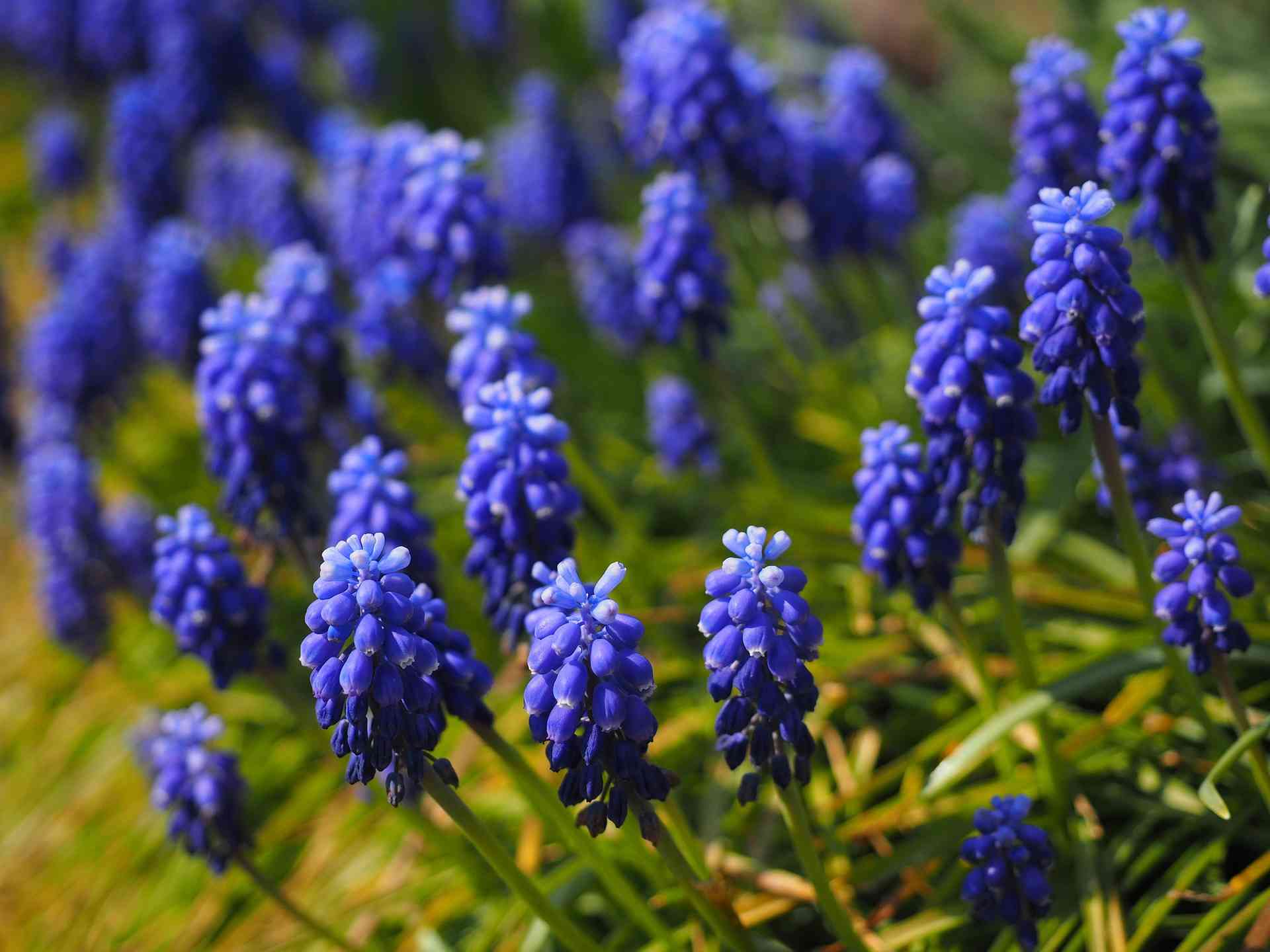
- In pots
Like hyacinths, Muscari bulblets can easily be forced in the cold from autumn, to enjoy their flowering and fragrance in the house. For outdoor planting, on the terrace or balcony, choose a sunny location and larger calibres with bigger flowers. You can also plant them in pots in the year of purchase and then install them in open ground.
- Do not plant them alone; associate them with larger bulblets
- Place miniature Muscari bulblets at the very front with crocuses, miniature cyclamens, pansies, or lily of the valley, at the back of botanical tulips, hyacinths, or reticulated irises
- Spread a layer of clay balls at the bottom of the pot for perfect drainage
- Fill the pot with a mix of garden soil, potting soil, and pouzzolane
- Plant closely (about ten bulblets per pot) and cover with twice the height of soil
- Water regularly in winter and autumn, then space out watering in summer to stop completely during the dormancy period

Keep Muscari in the house to enjoy their flowering and fragrance
Read also
Muscari: planting, growing tips and careGood to know
A resting period is essential after flowering for bulbs to regenerate. Do not prune the faded foliage but allow it to yellow and dry before cutting it back.
This somewhat neglected aspect can be easily concealed in a border by planting Muscari among Erythrones, Wood Anemones, Lungworts, or Spurge.
- Subscribe!
- Contents































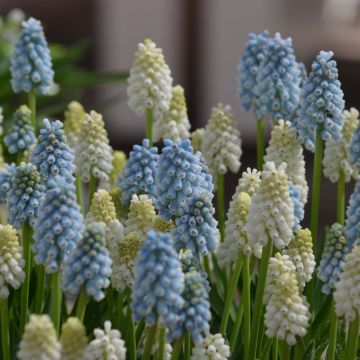
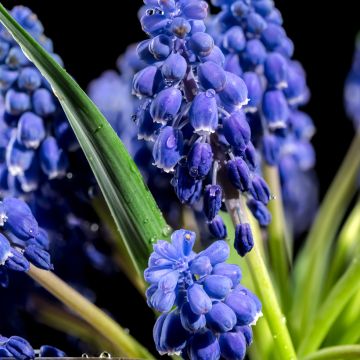
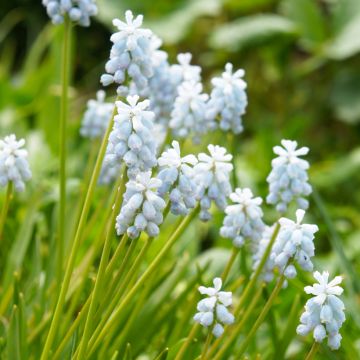
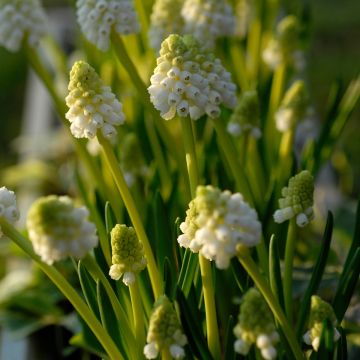
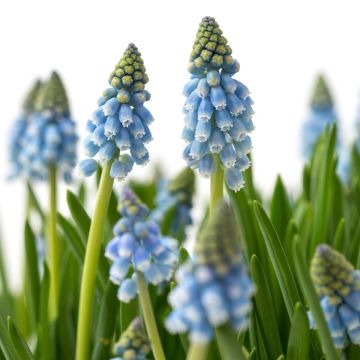

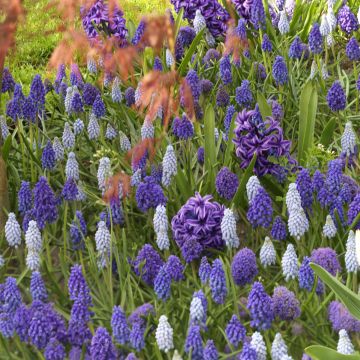
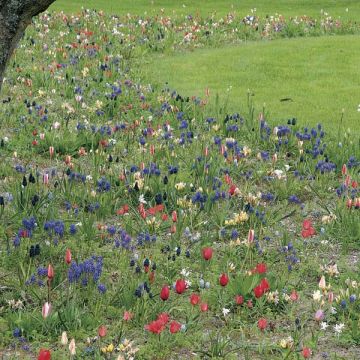
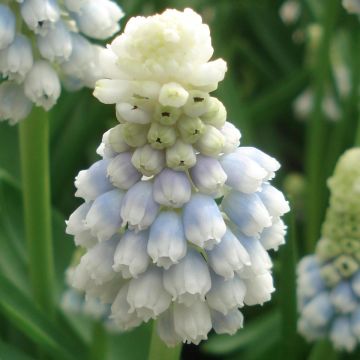
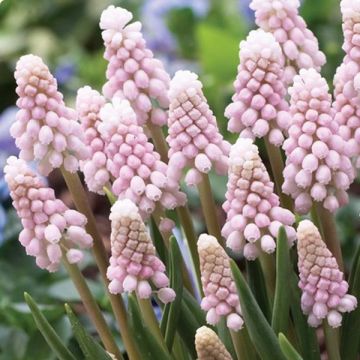
Comments